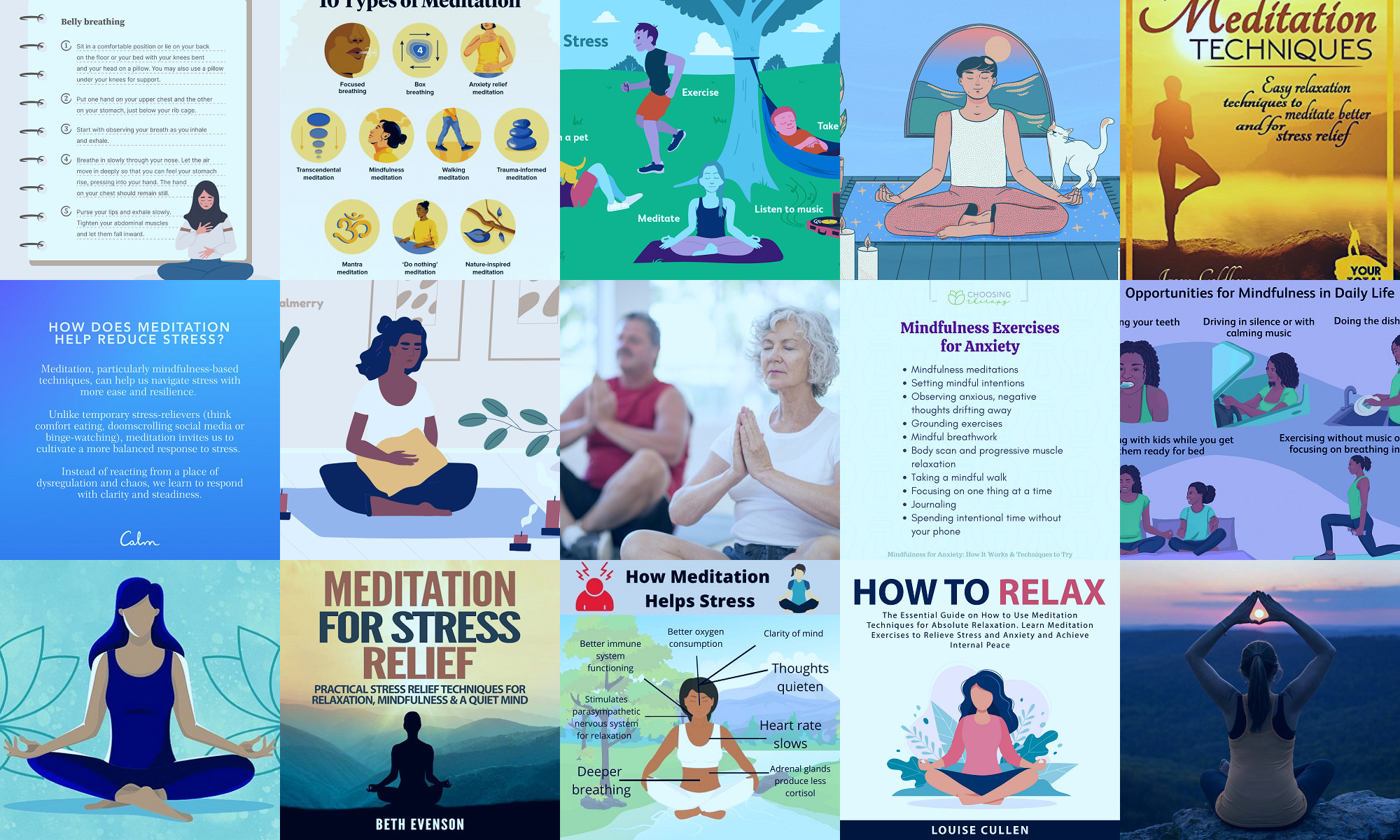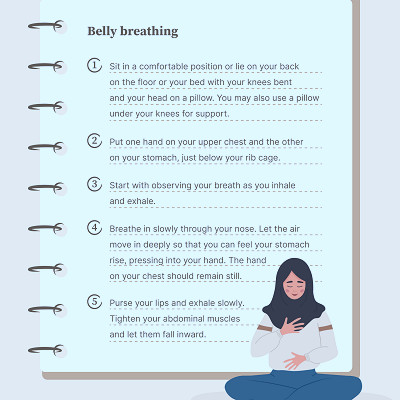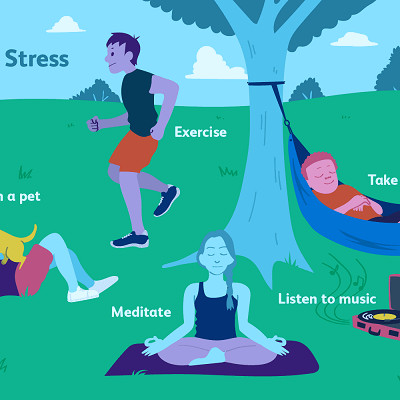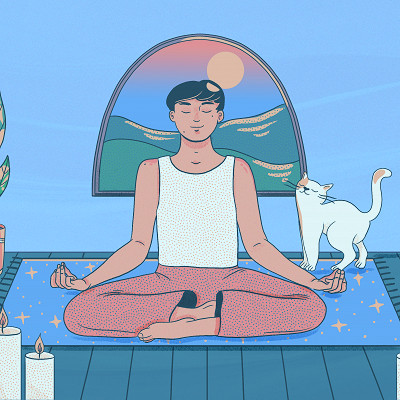 Jarlat Maletych/Shutterstock
Jarlat Maletych/Shutterstock
Features
Understanding Meditation
Meditation is a mind-body practice that promotes relaxation, builds internal energy, and fosters clear thinking. It can be practiced in various forms, including mindfulness, Zen, and transcendental meditation. Regular meditation can lead to significant health benefits, including reduced stress, improved concentration, and enhanced well-being.
Mindfulness Meditation
This form of meditation encourages individuals to focus on their breath while dismissing intrusive thoughts. By training the mind to live in the present moment, mindfulness meditation can alleviate stress and anxiety, cultivate mental clarity, and enhance emotional health.
Zen Meditation
Also known as Zazen, Zen meditation involves focusing attention on thoughts and ideas without judgment. This practice is part of Buddhist tradition and is often used for spiritual growth and stress management.
Transcendental Meditation
Transcendental meditation is a mantra-based technique that involves the repetition of specific words or phrases to clear the mind. It is a simple, natural, effortless procedure widely practiced for its stress-reducing benefits.
Body Scan Meditation
This technique involves focusing on different parts of the body to promote relaxation and mindfulness. By mentally scanning each body part, individuals can become aware of tension and release it, leading to improved overall well-being.
Guided Visualization
This meditation technique involves visualizing peaceful and positive images to replace negative thoughts. It can enhance relaxation, reduce stress, and promote a positive mental state.
Loving-Kindness Meditation
This practice involves developing feelings of compassion and love towards oneself and others. It can improve emotional well-being, boost self-esteem, and promote feelings of love and understanding.
Progressive Relaxation
Also known as body scan meditation, this technique involves tightening and then releasing each muscle group in the body to promote physical relaxation and mental calmness.
Qigong
An ancient Chinese practice, Qigong combines meditation, breathing techniques, and movement to balance the body's energy and improve health.
Yoga Nidra
Also known as yogic sleep or deep relaxation, Yoga Nidra is a systematic method of inducing complete physical, mental, and emotional relaxation.
Breath Awareness Meditation
This involves focusing solely on one's breath, disregarding all other thoughts. It can help improve concentration, reduce anxiety, and promote better stress management.
Kundalini Yoga
This form of yoga combines movement, breath, meditation, and chanting. It's designed to increase consciousness and unite the body's physical and spiritual aspects.
Walking Meditation
This is a form of meditation in action, where you use the experience of walking as your focus. It can help to cultivate mindfulness in everyday life and is especially beneficial for those who find it hard to sit still for traditional meditation.
Mantra Meditation
In this form of meditation, you silently repeat a calming word, thought or phrase to prevent distracting thoughts. It is a simple technique and can be done anywhere.
Tai Chi
This is a form of gentle Chinese martial arts. In Tai Chi, you perform a self-paced series of postures or movements in a slow, graceful manner while practicing deep breathing.
Biofeedback-Assisted Meditation
This technology-driven practice uses biofeedback devices to provide real-time information about stress markers in the body, such as heart rate and muscle tension, helping individuals understand their stress responses and learn to control them.
Autogenic Training
This technique uses both visual imagery and body awareness to create a deep state of relaxation. It involves a series of sessions in which people describe to themselves calming and peaceful images.
Forest Bathing
Also known as Shinrin-Yoku, this practice involves taking in the forest through our senses. This can reduce stress, help lower blood pressure, improve mood, and increase the ability to focus.
Rhythmic Movement
This involves engaging in activities such as walking, swimming, or dancing to a beat or rhythm. It can help to focus the mind and reduce stress.
Gong Meditation
This is a type of sound therapy where the gong is played in a therapeutic way to bring about healing. The sound of the gong creates deep relaxation, releases you from the torrent of thoughts, and stimulates the glandular system to a higher level of functioning.
Interesting notes and facts
1. The Power of Mindfulness: Mindfulness meditation is a practice that involves focusing your mind on your experiences in the present moment. It requires you to actively participate in your experience and observe without judgement. Regular practice of mindfulness meditation can reduce stress, improve mental health, and enhance overall well-being.2. Transcendental Meditation: Known for its simplicity and effectiveness, Transcendental Meditation involves silently repeating a mantra in a specific way. This form of meditation is practiced for 15-20 minutes twice a day, and is known to reduce stress, anxiety, and improve cardiovascular health.
3. The Art of Breathing: Breathing techniques play a crucial role in many meditation practices. Controlled breathing not only keeps the mind and body functioning at their best, but it can also lower blood pressure, promote feelings of calm and relaxation, and help us de-stress.
4. Progressive Muscle Relaxation: Progressive muscle relaxation involves tensing and then releasing each muscle group in the body. This practice can help reduce anxiety and physical symptoms of stress. It's an easy technique to learn and can be practiced almost anywhere.
5. Yoga Nidra: Also known as yogic sleep, Yoga Nidra is a form of guided meditation that induces complete physical, mental, and emotional relaxation. Regular practice of Yoga Nidra can help in stress reduction, improving sleep quality, and enhancing overall well-being.
6. Loving-Kindness Meditation: This type of meditation involves mentally sending goodwill, kindness, and warmth towards others by silently repeating a series of mantras. It's a practice that helps develop positive emotions towards oneself and others.
7. Body Scan Meditation: Body scan meditation involves focusing on different parts of the body and consciously relaxing them. It's a way to get in tune with the body and identify any areas that might need healing or attention.
8. Walking Meditation: Walking meditation is a form of meditation in action. In this practice, you use the experience of walking as your focus. It's a great way to connect with nature and reap the benefits of physical activity and meditation simultaneously.
9. Zazen (Zen Meditation): Zen meditation, or Zazen, is a part of Buddhist practice where one focuses on breath and mindfulness of thoughts without judgement. It's known to improve concentration, self-discipline, and provide a sense of peace.
10. Chakra Meditation: Chakra meditation focuses on the seven chakras or energy centers in the body, with the aim of cleaning and balancing them. This practice can lead to improved health, mindfulness, and positivity.
Vocabulary
- Meditation – A practice where an individual uses a technique to focus their mind on a particular object, thought or activity to achieve a mentally clear and emotionally calm state.
- Relaxation – A state of being free from tension and anxiety.
- Stress Relief – The process of removing or reducing stress, often through relaxation techniques.
- Mindfulness – A mental state achieved by focusing one's awareness on the present moment, while calmly acknowledging and accepting one's feelings, thoughts, and bodily sensations.
- Yoga – A Hindu spiritual and ascetic discipline, a part of which, including breath control, simple meditation, and the adoption of specific bodily postures, is widely practiced for health and relaxation.
- Deep Breathing – A practice of taking slow, full breaths in order to increase oxygen supply to the brain and stimulate the parasympathetic nervous system, promoting calmness.
- Progressive Muscle Relaxation – A technique that involves tensing and relaxing different muscle groups in the body to promote physical relaxation.
- Guided Imagery – A technique where you visualize peaceful scenes, places, or experiences to help relax and reduce stress.
- Tai Chi – A Chinese martial art practiced for both its defense training and its health benefits. It involves slow, fluid movements and deep breathing.
- Qi Gong – A holistic system of coordinated body posture and movement, breathing, and meditation used for health, spirituality, and martial arts training.
- Biofeedback – A process that enables an individual to learn how to change physiological activity for the purposes of improving health and performance.
- Hypnosis – A state of human consciousness involving focused attention and reduced peripheral awareness and an enhanced capacity to respond to suggestion.
- Reflexology – A type of massage that involves applying different amounts of pressure to the feet, hands, and ears.
- Aromatherapy – The use of aromatic plant extracts and essential oils for healing and cosmetic purposes.
- Acupuncture – A form of alternative medicine and a key component of traditional Chinese medicine in which thin needles are inserted into the body.
- Herbal Medicine – The study of the use of plants to treat disease and enhance general health and wellbeing.
- Homeopathy – A system of alternative medicine that uses small highly diluted quantities of natural substances to stimulate the body's healing processes.
- Naturopathy – A system of alternative medicine based on the theory that diseases can be successfully treated or prevented without the use of drugs.
- Chiropractic – A system of complementary medicine based on the diagnosis and manipulative treatment of misalignments of the joints.
- Osteopathy – A way of detecting, treating and preventing health problems by moving, stretching and massaging a person's muscles and joints.
- Holistic Medicine – A form of healing that considers the whole person -- body, mind, spirit, and emotions -- in the quest for optimal health and wellness.
- Nutrition – The process of providing or obtaining the food necessary for health and growth.
- Diet – The kinds of food that a person, animal, or community habitually eats.
- Exercise – Physical activity that is planned, structured, and repetitive for the purpose of conditioning the body.
- Sleep Hygiene – Practices and habits that are necessary to have good nighttime sleep quality and full daytime alertness.
- Antioxidants – Substances that may protect your cells against free radicals, which may play a role in heart disease, cancer and other diseases.
- Probiotics – Live bacteria and yeasts that are good for you, especially your digestive system.
- Omega-3 Fatty Acids – A type of fat that's important for your body and brain. Omega-3 fatty acids can have various health benefits.
- Vitamins – Organic compounds that are needed in small quantities to sustain life.
- Minerals – Solid, naturally occurring substances that are the building blocks of rocks and earth and are essential for the body to function properly.
- Fiber – Dietary material containing substances such as cellulose, that are resistant to the action of digestive enzymes.
- Hydration – The process of causing something to absorb water.
- Detoxification – The process of removing toxic substances or qualities.
- Immunity – The ability of an organism to resist a particular infection or toxin by the action of specific antibodies or sensitized white blood cells.
- Physical Therapy – The treatment of disease, injury, or deformity by physical methods such as massage, heat treatment, and exercise rather than by drugs or surgery.
- Occupational Therapy – The use of particular activities as an aid to recuperation from physical or mental illness.
- Psychotherapy – The treatment of mental disorder by psychological rather than medical means.
- Cognitive Behavioral Therapy – A type of psychotherapeutic treatment that helps patients understand the thoughts and feelings that influence behaviors.
- Ayurveda – A system of medicine with historical roots



